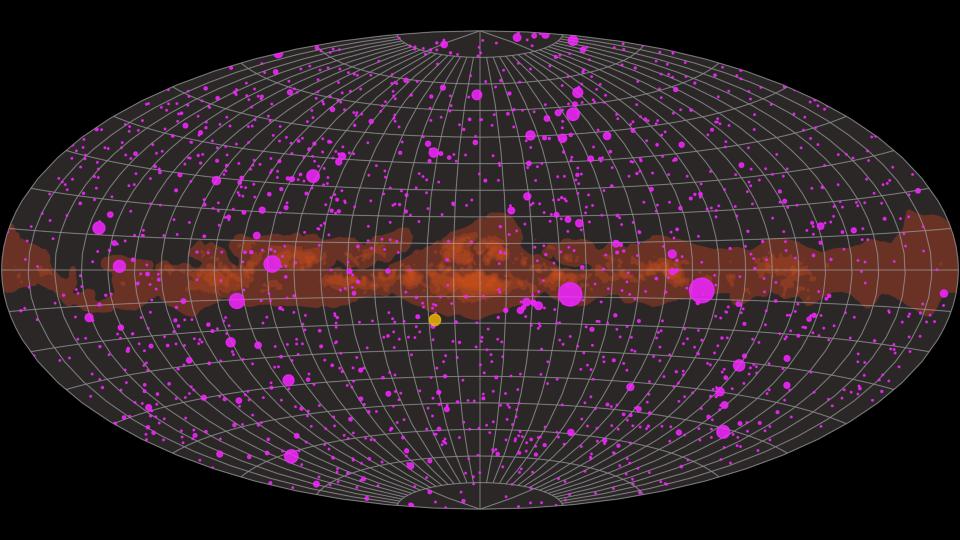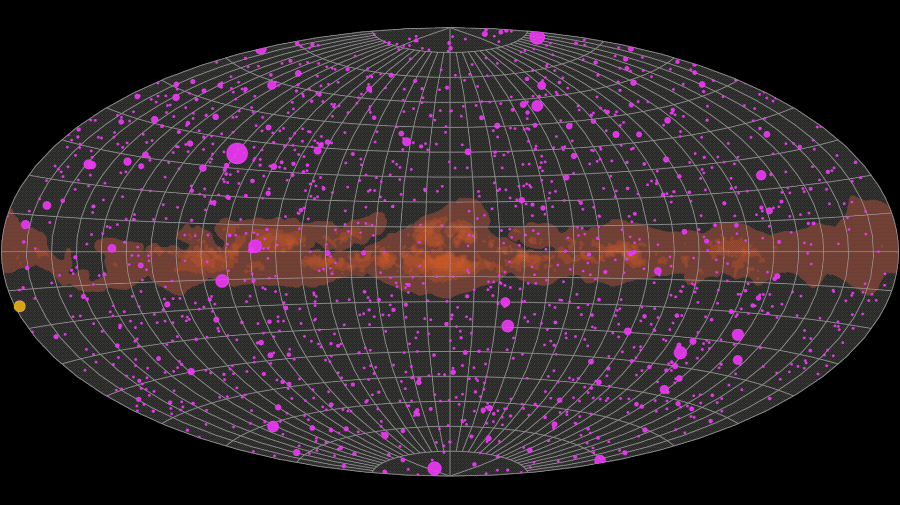Here's what the sky would look like if humans could see gamma rays (video)

A new NASA animation shows what the sky over Earth would look like to humans if we had evolved to see high-energy gamma-ray light rather than just the visible light spectrum.
The animation represents a cosmic firework display created as Earth's atmosphere is belted by gamma rays from astrophysical sources and powerful cosmic events.
The animation shows a frenzy of gamma-ray activity between February 2022 to February 2023. Each frame of the animation shows a three-day period of observation, with some of the sources fluctuating in gamma rays throughout the entire year.
Related: What is a gamma-ray burst?

The pulsing magenta circles in the animation show 1,500 gamma-ray detections growing and shrinking in size to represent how each source intensifies and dims over time. The yellow circle swooping across the animation traces the path of the sun, and the thick orange band represents the central plane of our Milky Way galaxy, a consistent producer of gamma rays.
The footage was created using data collected by the Large Area Telescope (LAT) aboard NASA's Fermi Gamma-ray Space Telescope, which has been examining the gamma-ray sky from space for nearly 15 years. Beyond the animation, the data is curated in a publicly available and continually updated interactive library that is the work of an international team of scientists.
LAT scans the entire sky every three hours. spotting gamma rays with energies ranging from 20 million to over 300 billion electron volts. These are incredibly high-energy photons; visible light photons mostly fall between 2 to 3 electron volts.
"We were inspired to put this database together by astronomers who study galaxies and wanted to compare visible and gamma-ray light curves over long time scales," Daniel Kocevski, repository co-author and an astrophysicist at NASA's Marshall Space Flight Center in Huntsville, Alabama, said in a statement. "We were getting requests to process one object at a time. Now the scientific community has access to all the analyzed data for the whole catalog."
Blazars, gamma rays and galaxies
Over 90% of the cosmic firework gamma-rays in the animation originate from active galaxies called "blazars," in which feeding supermassive black holes blast out jets of material and radiation directly toward Earth.

 Yahoo Autos
Yahoo Autos 